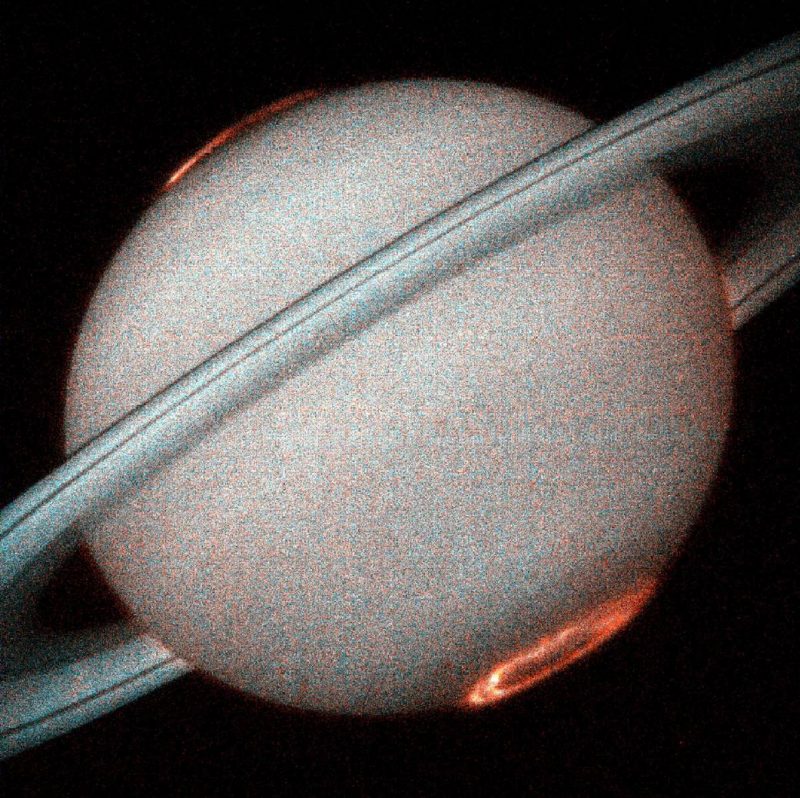
The mighty auroras of Saturn
Space scientists said on February 7, 2022, that they’ve uncovered a never-before-seen mechanism for fueling the auroras at Saturn’s south pole. Pioneer 11 saw the first hints of Saturn’s aurora when it flew past the planet in 1979. The Voyager 1 and 2 flybys of Saturn in the early 1980s helped, too, by providing a description of the giant magnetic bubble surrounding Saturn, aka its magnetosphere. As on Earth, Saturn’s magnetosphere interacts with the solar wind to create Saturn’s auroras. But Saturn’s magnestosphere isn’t the only driver of its auroras. Scientists at the University of Leicester found that:
… Saturn is unique among planets observed to date in that some of its auroras are generated by swirling winds within its own atmosphere.
The peer-reviewed journal Geophysical Research Letters published a description of the wind-driven auroras on Saturn. The scientists based the study on observations made at the W. M. Keck Observatory in Hawaii. A statement from Keck explained:
At all other observed planets, including Earth, auroras are only formed by powerful currents that flow into the planet’s atmosphere from the surrounding magnetosphere. These are driven by either interaction with charged particles from the sun (as at the Earth) or volcanic material erupted from a moon orbiting the planet (as at Jupiter and Saturn).
This discovery changes scientists’ understanding of planetary auroras. And it answers one of the first mysteries raised by NASA’s Cassini probe, which reached Saturn in 2004: why can’t we easily measure the length of a day on the ringed planet?
Apparently, when it first arrived at Saturn, Cassini tried to measure the length of a Saturn’s day. It did so by tracking radio emission “pulses” from Saturn’s atmosphere. Voyager 2 had also measured these pulses when it flew past in 1981. Surprising the scientists, the rate of the pulses appeared to have changed over the two decades since Voyager 2’s visit in 1981. Could the day length of Saturn change that quickly?
Nahid Chowdhury at the University of Leicester – the aurora study’s lead author – said:
Saturn’s internal rotation rate has to be constant … So we know something unique and strange must be happening at Saturn. Several theories have been touted since the advent of the NASA Cassini mission trying to explain … This study represents the first detection of the fundamental driver, situated in the upper atmosphere of the planet …
Chowdhury’s study shows that high-altitude winds in Saturn’s atmosphere affect both the measurement of the radio pulses … and also Saturn’s auroras. Chowdhury commented:
It’s absolutely thrilling to be able to provide an answer to one of the longest standing questions in our field.
EarthSky 2022 lunar calendars now available! Order now. Going fast!

Bottom line: Scientists have found that Saturn is unique among planets observed to date in that some of its auroras are generated by swirling winds within its own atmosphere.
The post Mighty Saturn auroras driven by high-altitude winds first appeared on EarthSky.
0 Commentaires